Blog
Sever’s Disease Common Among Younger Athletes
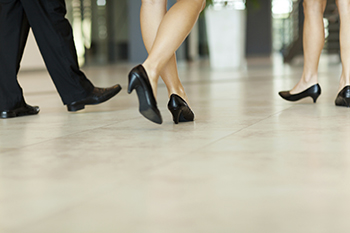 One of the most common injuries among young soccer players is heel pain. This is often the result of a condition called apophystis, which is also known as Sever’s Disease. This condition occurs when there is inflammation of the heel plate of the heel bone. In younger players, this area has not fully matured. The pain associated with Sever’s Disease tends to be more common in running and jumping sports.
One of the most common injuries among young soccer players is heel pain. This is often the result of a condition called apophystis, which is also known as Sever’s Disease. This condition occurs when there is inflammation of the heel plate of the heel bone. In younger players, this area has not fully matured. The pain associated with Sever’s Disease tends to be more common in running and jumping sports.
When dealing with systemic disease of the feet, is extremely important to check the affected areas routinely so that any additional problems are caught quickly. If you have any concerns about your feet and ankles contact one of our podiatrists of New York Foot and Ankle. Our doctors can provide the care you need to keep your pain free and on your feet.
Systemic Diseases of the Feet
Systemic diseases affect the whole body, and symptoms usually are displayed in the feet. This condition can make a patient’s ability to walk unbearable. Systemic diseases include gout, diabetes mellitus, neurological disorders, and arthritis.
Gout – is caused by an excess of uric acid in the body. Common symptoms include pain, inflammation, and redness at the metatarsal/phalangeal joint of the base big toe. Gout can be treated by NSAIDs to relieve pain and inflammation, and other drugs that lower the acid levels in the body.
Diabetes mellitus – is an increase in the level of blood sugar that the body cannot counteract with its own insulin. Failure to produce enough insulin is a factor in Diabetes.
Diabetes of the Feet
Diabetic Neuropathy – may lead to damaged nerves and affect the feet through numbness and loss of sensation.
Peripheral Vascular Disease – can restrict the blood flow to the feet, and often times lead to amputation of the feet.
If you have any questions, please feel free to contact one of our offices located in Bethpage and Franklin Square, NY. We offer the newest diagnostic and treatment technologies for all your foot care needs.
Sammy Watkins Recovers from Stress Fracture
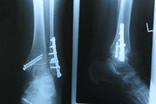 Wide Receiver Sammy Watkins had foot surgery in April to repair a stress fracture in his left foot, and had gradually increased his activity so that he could make a return for the season opener. Watkins had started in the season opener, but had to be evaluated the next day for what appeared to be soreness in his foot. Watkins, however, was confident that the pain was not a cause for alarm. However, according to the article, it is crucial for an athlete to properly recover and take it slow after healing from a stress fracture injury, as the bone is still remodeling itself and the risk of injury is still high.
Wide Receiver Sammy Watkins had foot surgery in April to repair a stress fracture in his left foot, and had gradually increased his activity so that he could make a return for the season opener. Watkins had started in the season opener, but had to be evaluated the next day for what appeared to be soreness in his foot. Watkins, however, was confident that the pain was not a cause for alarm. However, according to the article, it is crucial for an athlete to properly recover and take it slow after healing from a stress fracture injury, as the bone is still remodeling itself and the risk of injury is still high.
Activities where too much pressure is put on the feet can cause stress fractures. To learn more, contact one of our podiatrists of New York Foot and Ankle. Our doctors can provide the care you need to keep your pain free and on your feet.
Dealing with Stress Fractures of the Foot and Ankle
The Stress Fractures occur on the foot and ankle when muscles in these areas weaken from too much or too little use. Then the feet and ankles lose support when walking or running from the impact of the ground. Since there is no protection the bones receive the full impact of each step. The stress on the feet causes cracks to form in the bones, thus called stress fractures.
What are Stress Fractures?
Stress fractures occur frequently in individuals whose daily activities cause great impact on the feet and ankles. Stress factors are most common among:
- runners
- people affected with Osteoporosis
- play tennis or basketball
- gymnastics
- high impact workouts
Symptoms
Pain from the fractures occur in the area of the fractures, and can be constant or intermittent. It will often cause sharp or dull pain with swelling and tenderness. Engaging in any kind of activity which involves in high impact will aggravate pain.
If you have any questions, please feel free to contact one of our offices located in Bethpage and Franklin Square, NY. We offer the newest diagnostic and treatment technologies for all your foot care needs.
How to Find Proper Fitting Shoes for Your Children
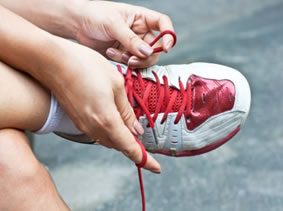 Now that it is time for kids to go back-to-school, they may need a new pair of shoes before they start the new school year. It is important that you assist your child in picking out a new pair of shoes for school, because wearing proper-fitting shoes is key to the health of your feet. You should always make sure that your child is going for a shoe that is healthy for his or her feet, rather than one that is stylish.
Now that it is time for kids to go back-to-school, they may need a new pair of shoes before they start the new school year. It is important that you assist your child in picking out a new pair of shoes for school, because wearing proper-fitting shoes is key to the health of your feet. You should always make sure that your child is going for a shoe that is healthy for his or her feet, rather than one that is stylish.
Finding a properly-fitting shoe is important in reducing injuries and preventing foot problems. For more information about treatment, contact one of our podiatrists of New York Foot and Ankle. Our doctors can provide the care you need to keep your pain free and on your feet.
Proper Shoe Fitting
A common concern when it comes to foot health, having properly fitted shoes can help prevent injuries to the foot. Out feet affect our posture and gait, which in turn affects the biomechanics and overall bodily structure. With 33 joints, 26 bones, and over 100 ligaments, the potential for serious injury is much greater than one realizes. Although the feet cease growth in adulthood, they still change shape as they mature. Here are some factors to consider when it comes to investing in proper fitting shoes:
- Be sure the shoes fit correctly right away
- Ensure the ball of your foot fits comfortably in the widest portion of the shoes
- Even though they may look fashionable, improper fitting shoes can either create adverse conditions or exacerbate existing ones you may already have
- Walk along a carpeted surface to ensure the shoes comfortably fit during normal activity
Keeping in mind how shoes fit the biomechanics of your body, properly-fitting shoes is vitally important. Fortunately, it is not difficult to acquire footwear that fits correctly. Be sure to wear shoes that support the overall structure of your body. Do your feet a favor and invest in several pairs of well-fitted shoes today.
If you have any questions, please feel free to contact our office located in Bethpage and Franklin Square, NY. We offer the newest diagnostic and treatment technologies for all your foot care needs.
Flat Feet Risk Factors
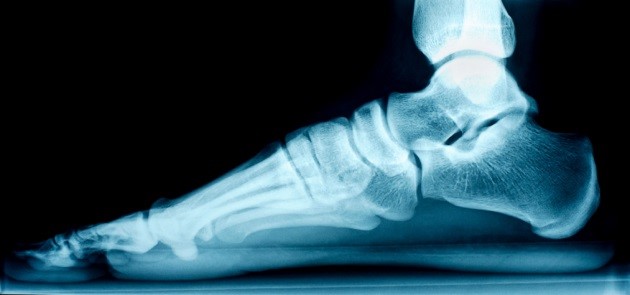 Flat foot is a condition commonly caused by a dysfunction of the posterior tibial tendon, a tendon of the ankle. Other factors that can increase the risk of flat feet include, “high blood pressure, obesity, diabetes, previous surgery or trauma, rheumatoid arthritis, and exposure to steroids.” Older individuals as well as previous injury to the area can lead to the development of flatfoot. Seek medical attention to ensure proper prevention of the progression of the condition.
Flat foot is a condition commonly caused by a dysfunction of the posterior tibial tendon, a tendon of the ankle. Other factors that can increase the risk of flat feet include, “high blood pressure, obesity, diabetes, previous surgery or trauma, rheumatoid arthritis, and exposure to steroids.” Older individuals as well as previous injury to the area can lead to the development of flatfoot. Seek medical attention to ensure proper prevention of the progression of the condition.
Flatfoot is a condition many people suffer from. If you have flat feet, contact one of our podiatrists of New York Foot and Ankle. Our doctors will assist you with all of your podiatric concerns.
What are Flat Feet?
Flat feet are a condition in which the arch of the foot is depressed and the sole of the foot is almost completely in contact with the ground. Standing about 20-30% of the population generally has flat feet because their arch never formed during growth.
Conditions & Problems:
Having flat feet makes it difficult to run or walk because of the stress placed on the ankles.
Alignment – The general alignment of your legs can be disrupted, because the ankles move inward which can cause major discomfort.
Knees – if you have complications with your knees, flat feet can be a contributor to arthritis in that area.
Symptoms:
Pain around the heel or arch area
Trouble standing on the tip toe.
Swelling around the inside of the ankle.
Flat look to one or both feet.
Having your shoes feel uneven when worn
Treatment:
If you are experiencing pain and stress on the foot you may weaken the posterior tibial tendon, which runs around the inside of the ankle.
If you have any questions please feel free to contact our office located in Bethpage and Franklin Square, NY. We offer the newest diagnostic and treatment technologies for all your foot and ankle needs.
Jacob Maxwell Undergoes Foot Surgery
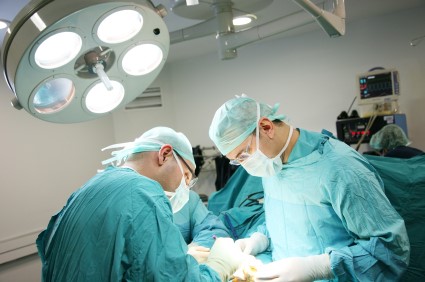 Wisconsin’s starting right tackle, Jacob Maxwell, recently admitted that he suffered an injury in his left foot. He revealed that he underwent surgery to repair a stress fracture in his foot. Maxwell wasn’t cleared for workouts until three weeks prior to camp. He states that this was a setback, however he is continuing to get stronger and better again.
Wisconsin’s starting right tackle, Jacob Maxwell, recently admitted that he suffered an injury in his left foot. He revealed that he underwent surgery to repair a stress fracture in his foot. Maxwell wasn’t cleared for workouts until three weeks prior to camp. He states that this was a setback, however he is continuing to get stronger and better again.
Foot surgery is sometimes necessary to fix a foot ailment. To learn more, contact one of our podiatrists of New York Foot and Ankle. Our doctors can provide the care you need to keep you pain-free and on your feet.
When Is Surgery Necessary?
Foot and ankle surgery is generally reserved for cases in which less invasive, conservative procedures have failed to help with the problem. Some of the cases in which surgery may be necessary are:
- Removing foot deformities like bone spurs and bunions
- Severe arthritis that has caused bone issues
- Cosmetic reconstruction
What Types of Surgery Are There?
The type of surgery you receive will depend on the nature of the problem you have. Some of the possible surgeries include:
- Bunionectomy for painful bunions
- Surgical fusion for realignment of bones
- Neuropathy decompression surgery to treat nerve damage
Benefits of Surgery
Although surgery is usually a last resort, it can provide more complete pain relief compared to non-surgical methods and may allow you to finally resume full activity.
Surgical techniques have also become increasingly sophisticated. Techniques like endoscopic surgery allow for smaller incisions and faster recovery times.
If you have any questions please feel free to contact our office located in Bethpage and Franklin Square, NY. We offer the newest diagnostic and treatment technologies for all your foot and ankle needs.
High Heels May Negatively Impact Foot Health
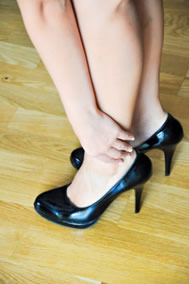 A study published by the Journal of Applied Physiology has determined that long-term high heel use can have detrimental effects on the legs’ muscles, such as muscle strain and muscle fatigue. According to the study’s abstract, long-term high heel use has been found to “shorten medial gastrocnemius muscle fascicles and increase Achilles tendon stiffness.” The study’s results are consistent with reports that high heel wearers often experience discomfort, pain, and tiredness. It also suggests that “long-term high heel use may compromise muscle efficiency in walking”.
A study published by the Journal of Applied Physiology has determined that long-term high heel use can have detrimental effects on the legs’ muscles, such as muscle strain and muscle fatigue. According to the study’s abstract, long-term high heel use has been found to “shorten medial gastrocnemius muscle fascicles and increase Achilles tendon stiffness.” The study’s results are consistent with reports that high heel wearers often experience discomfort, pain, and tiredness. It also suggests that “long-term high heel use may compromise muscle efficiency in walking”.
High heels have a history for causing foot and ankle problems. If you have any concerns about your feet or ankles, contact one of our podiatrists of New York Foot and Ankle. Our doctors can provide the care you need to keep your pain free and on your feet.
Effects of High Heels on the Feet
High heels are popular shoes among women because their style and societal appeal. Despite this, they can still cause many health problems if worn too frequently.
What parts my body will be affected by high heels?
- Ankle Joints
- Achilles Tendon – may shorten and stiffen with prolonged wear
- Balls of the Feet
- Knees – heels cause the knees to bend constantly, creating stress on them
- Back – they decrease the spine’s ability to absorb shock, which may lead to back pain. Also, the vertebrae of the lower back may compress.
What kinds of foot problems can develop from wearing high heels?
- Corns
- Calluses
- Hammertoe
- Bunions
- Morton’s Neuroma
- Plantar Fasciitis
How can I still wear high heels and maintain foot health?
If you want to wear high heeled shoes, make sure that you are not wearing them every day, as this will help prevent long term physical problems. Try wearing thicker heels as opposed to stilettos to distribute weight more evenly across the feet. Always make sure you are wearing the proper shoes for the right occasion, such as sneakers for exercising. If you walk to work, try carrying your heels with you and changing into them once you arrive at work. Adding inserts to your heels can help cushion your feet and absorb shock. Full foot inserts or metatarsal pads are available.
If you have any questions please feel free to contact our offices located in Bethpage and Franklin Square, NY. We offer the newest diagnostic tools and technology to treat your foot and ankle needs.
Study Could Predict Susceptibility of Rheumatoid Arthritis
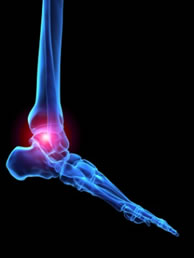 Rheumatoid arthritis is an autoimmune disorder, or a condition in which the body attacks itself. Bacteria in the gut has been found to predict susceptibility of rheumatoid arthritis. Experts were able to study microbes that were normally low in healthy individuals, but high in people with rheumatoid arthritis. This study could be used to predict if someone is likely to have rheumatoid arthritis in the future.
Rheumatoid arthritis is an autoimmune disorder, or a condition in which the body attacks itself. Bacteria in the gut has been found to predict susceptibility of rheumatoid arthritis. Experts were able to study microbes that were normally low in healthy individuals, but high in people with rheumatoid arthritis. This study could be used to predict if someone is likely to have rheumatoid arthritis in the future.
Because RA affects more than just your joints, including the joints in your feet and ankles, it is important to seek early diagnosis from your podiatrist if you feel like the pain in your feet might be caused by RA. For more information, consult with one of our podiatrists of New York Foot and Ankle. Our doctors can provide the care you need to keep your pain free and on your feet.
What Is Rheumatoid Arthritis?
Rheumatoid Arthritis (RA) is an autoimmune disorder in which the body’s own immune system attacks the membranes surrounding the joints. Inflammation of the lining and eventually the destruction of the joint’s cartilage and bone occur, causing severe pain and immobility.
Rheumatoid Arthritis of the Feet
Although RA usually attacks multiple bones and joints throughout the entire body, almost 90 percent of cases result in pain in the foot or ankle area.
Symptoms
- Swelling & pain in the feet
- Stiffness in the feet
- Pain on the ball or sole of feet
- Joint shift and deformation
Diagnosis
Quick diagnosis of RA in the feet is important so that the podiatrist can treat the area effectively. Your doctor will ask you about your medical history, occupation, and lifestyle to determine the origin of the condition. Rheumatoid Factor tests help to determine if someone is affected by the disease.
If you have any questions, please feel free to contact our offices located in Bethpage and Franklin Square, NY. We offer the newest diagnostic and treatment technologies for all your foot care needs.
Bariatric Surgery Can Lower Heart Rate in Obese Teens
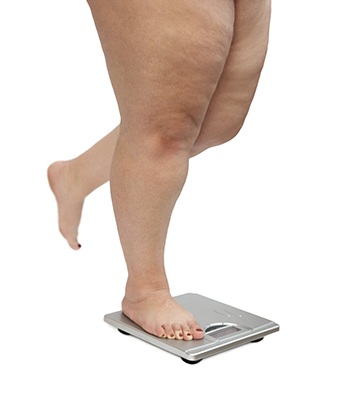 A report from the CDC revealed that one in five U.S. teenagers is obese. Researchers found that weight loss surgery might offer pain relief particularly in the feet and increase mobility for teenagers who are obese. The procedure, which is called bariatric surgery, has been found to also lower heart rate in those who have had it done. This shows that the surgery can improve cardiovascular fitness. Getting rid of excess weight can have long lasting health benefits for teens so it is important for them to make lifestyle modifications in order to achieve a healthy weight.
A report from the CDC revealed that one in five U.S. teenagers is obese. Researchers found that weight loss surgery might offer pain relief particularly in the feet and increase mobility for teenagers who are obese. The procedure, which is called bariatric surgery, has been found to also lower heart rate in those who have had it done. This shows that the surgery can improve cardiovascular fitness. Getting rid of excess weight can have long lasting health benefits for teens so it is important for them to make lifestyle modifications in order to achieve a healthy weight.
Any additional problems in the feet of those with obesity can be detrimental to foot health. If you have any concerns, contact one of our podiatrists of New York Foot and Ankle. Our doctors will treat your foot and ankle needs.
Obesity and your Feet
Since your feet are what support your entire weight when standing, any additional weight can result in pain and swelling. Being overweight is one of the main contributors to foot complications.
Problems & Complications
Extra Weight – Even putting on just a few extra pounds could create serious complications for your feet. As your weight increases, your balance and body will shift, creating new stresses on your feet. This uneven weight distribution can cause pain, even while doing the simplest tasks, such as walking.
Diabetes – People who are overweight are at serious risk of developing type-2 diabetes, which has a drastic impact on the health of your feet. As you get older, your diabetes might worsen, which could lead to loss of feeling in your feet, sores, and bruises. You could also become more prone to various infections.
Solutions
Footwear – Specially made footwear that supports your joints, arches, and ankles, and allows room for good circulation is a great option to mitigate pressure and pain. A podiatrist will help you decide what works best for your specific needs.
Exercise – Exercise will help alleviate the pain and give your feet the strength it needs to support your body. Exercise also increases blood flow to your feet, allowing them to remain healthy and strong.
Most importantly, seek the help of a podiatrist for foot care if something is wrong or doesn’t seem to be working. A podiatrist will help you with any questions or information needed.
If you have any questions please feel free to contact our office located in Bethpage and Franklin Square, NY. We offer the newest diagnostic and treatment technologies for all your foot and ankle needs.
Read more about obesity and the feet.
DIY Pedicures can help maintain Healthy Feet
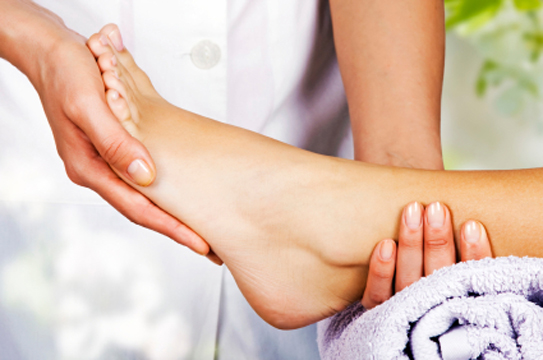 Pedicures are very important when it comes to maintaining healthy feet. Prior to giving yourself a pedicure, you should soak your feet in hot water with bath salts or oils. Soaking your feet will help soften calluses and remove any unwanted particles from your skin. The next step in your DIY pedicure is to trim your toenails. Trimming your toenails will help prevent dirt from being trapped underneath them. You should be careful to cut straight across when trimming your nails, in order to prevent ingrown toenails. Be sure to file your nails in the same direction in order to avoid damaging your nails.
Pedicures are very important when it comes to maintaining healthy feet. Prior to giving yourself a pedicure, you should soak your feet in hot water with bath salts or oils. Soaking your feet will help soften calluses and remove any unwanted particles from your skin. The next step in your DIY pedicure is to trim your toenails. Trimming your toenails will help prevent dirt from being trapped underneath them. You should be careful to cut straight across when trimming your nails, in order to prevent ingrown toenails. Be sure to file your nails in the same direction in order to avoid damaging your nails.
Every day foot care is very important to prevent infection and other foot ailments. If you need your feet checked, contact one of our podiatrists of New York Foot and Ankle. Our doctors can provide the care you need to keep your pain free and on your feet.
Every Day Foot Care
Often, people take care of their bodies, face and hair more so than they do for their feet. But the feet are a very important aspect of our bodies, and one that we should pay more attention to. After all, without our feet, we would not be able to perform most daily tasks. It is best to check your feet regularly to make sure there are no new bruises or cuts that you may not have noticed before, for example.
For dry feet, moisturizer can easily be a remedy and can be applied as often as necessary to the affected areas. Wearing shoes that fit well can also help you maintain good foot health, as well as making it easier to walk and do daily activities without the stress or pain of ill-fitting shoes, high heels, or even flip flops.
Also, wearing clean socks with closed shoes is important to ensure that sweat and bacteria do not accumulate within the shoe. Clean socks help to prevent athlete’s foot, fungi problems, bad odors, and can absorb sweat.
If you have any questions, please feel free to contact our office located in Bethpage and Franklin Square, NY. We offer the newest diagnostic and treatment technologies for all your foot care needs.
Read more about Everyday Foot Care
Using RICE to Treat Ankle Sprains
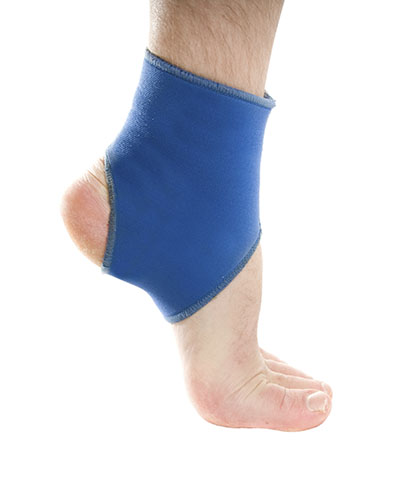 The RICE method is commonly used to treat ankle sprains. The acronym “RICE” stands for rest, ice, compression, and elevation. However there has been some uncertainty about whether or not icing your sprained ankle will be beneficial in the healing process. Some athletic trainers believe that icing your injury will prevent blood flow to the area and delay healing. Nevertheless, icing will help numb the pain and reduce swelling in the injured area, but you should not place it directly on your skin. You should place a thin piece of cloth between the ice and your skin, and avoid icing for more than twenty minutes at a time in order to avoid frostbite.
The RICE method is commonly used to treat ankle sprains. The acronym “RICE” stands for rest, ice, compression, and elevation. However there has been some uncertainty about whether or not icing your sprained ankle will be beneficial in the healing process. Some athletic trainers believe that icing your injury will prevent blood flow to the area and delay healing. Nevertheless, icing will help numb the pain and reduce swelling in the injured area, but you should not place it directly on your skin. You should place a thin piece of cloth between the ice and your skin, and avoid icing for more than twenty minutes at a time in order to avoid frostbite.
Ankle sprains are common, but need immediate attention. If you have any concerns about your feet or ankles, contact one of our podiatrists of New York Foot and Ankle. Our doctors will assist you with all of your foot and ankle needs.
How Does an Ankle Sprain Occur?
Ankle sprains take place when the ligaments in your ankle are torn or stretched beyond their limits. There are multiple ways that the ankle can become injured, including twisting or rolling over onto your ankle, putting undue stress on it, or causing trauma to the ankle itself.
What are the Symptoms?
- Mild to moderate bruising
- Limited mobility
- Swelling
- Discoloration of the skin (depending on severity)
Preventing a Sprain
- Wearing appropriate shoes for the occasion
- Stretching before exercises and sports
- Knowing your limits can aid in prevention
Treatment of a Sprain
Treatment of a sprain depends on the severity. Many times, people are told to rest and remain off their feet completely, while others are given an air cast. If the sprain is very severe, surgery may be required.
If you have suffered an ankle sprain previously, you may want to consider additional support such as a brace and regular exercises to strengthen the ankle.
If you have any questions, please feel free to contact our office located in Bethpage and Franklin Square, NY. We offer the newest diagnostic and treatment technologies for all your foot care needs.
Read more about ankle sprains.
More...
Thomas Phillip Runs Boston Marathon Barefoot
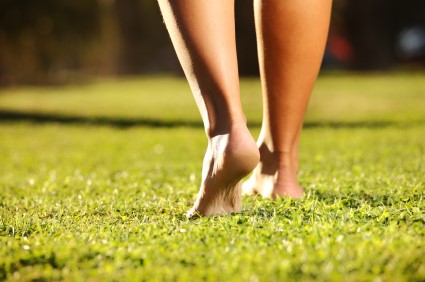 For thousands of years, humans have ran without wearing footwear. Humans are natural runners because our feet are made to be run on. A man named Thomas Bobby Phillip was training his daughter for a sporting event when he discovered his passion for running. He started out running smaller distances and eventually worked his way up toward longer ones. Phillip became the first Indian to ever run the Boston Marathon barefoot.
For thousands of years, humans have ran without wearing footwear. Humans are natural runners because our feet are made to be run on. A man named Thomas Bobby Phillip was training his daughter for a sporting event when he discovered his passion for running. He started out running smaller distances and eventually worked his way up toward longer ones. Phillip became the first Indian to ever run the Boston Marathon barefoot.
Barefoot running has its own share of benefits and disadvantages. If you have any concerns about your feet or ankles, contact one of our podiatrists of New York Foot and Ankle. Our doctorswill treat your foot and ankle needs.
Barefoot Running
The Impact of Barefoot Running
-Running without shoes changes the motion of your running, as most running is done by landing on the heel of the feet.
-Running barefoot requires a different way of running; the landing is done on the front part of the feet.
The Advantages of Barefoot Running
-When running and landing on the front feet, the impact on the feet and ankle is reduced, this can reduce stress injuries.
-It strengthens muscles in the feet and ankles and the lower legs.
-Balance of the body is improved and there is a greater sensory input from the feet to the rest of the body.
The Drawbacks of Barefoot Running
-No protection while running, makes it likely that runners will land on sharp objects and scrapes, bruises and cuts on the feet will result.
-Blisters may form.
-Possibility of plantar fascia problems.
-Risk of getting Achilles tendonitis.
So what can runners do to make barefoot running safe? It’s best to make a slow transition from running shoes to barefoot running. Once the feet begin to adjust, try walking, then jogging and gradually increasing the distance. Minimalist running shoes may also be an option.
If you have any questions, please feel free to contact one of our offices located in Bethpage and Franklin Square, NY. We offer the newest diagnostic and treatment technologies for all your foot care needs.
Doyle Ruptures Achilles Tendon
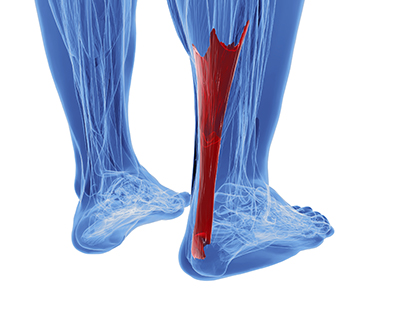 Midfielder Nathan Doyle recently ruptured his Achilles tendon during pre-season training. He only made 14 appearances last season due to a series of injuries. Nathan already underwent surgery and hopes to have a smooth recovery. He is expected to return in mid-September.
Midfielder Nathan Doyle recently ruptured his Achilles tendon during pre-season training. He only made 14 appearances last season due to a series of injuries. Nathan already underwent surgery and hopes to have a smooth recovery. He is expected to return in mid-September.
Achilles tendon injuries need immediate attention to avoid future complications. If you have any concerns, contact one of our podiatrists of New York Foot and Ankle. Our doctors will treat your foot and ankle needs.
What is the Achilles Tendon?
The Achilles tendon is a tendon that connects the lower leg muscles and calf to the heel of the foot. It is the strongest tendon in the human body and is essential for making movement possible. Because this tendon is such an integral part of the body, any injuries to it can cause severe difficulties and should immediately be presented to a doctor.
What are the symptoms of an Achilles Tendon Injury?
There are various types of injuries that can affect the Achilles tendon. The two most common are Achilles tendinitis and ruptures of the tendon.
Achilles Tendinitis Symptoms
- Inflammation
- Dull to Severe Pain
- Increased blood flow to the tendon
- Thickening of the tendon
Rupture Symptoms
- Extreme pain and swelling in the foot
- Total immobility
Treatment and Prevention
Achilles tendon injuries are diagnosed by a thorough physical evaluation, which can include an MRI. Treatment involves rest, physical therapy, and in some cases, surgery. However, various preventative measures can be taken to avoid these injuries, such as:
- Thorough stretching of the tendon before and after exercise
- Strengthening exercises like calf raises, squats, leg curls, leg extensions, leg raises, lunges, and leg presses
If you have any questions please feel free to contact our office located in Bethpage and Franklin Square, NY. We offer the newest diagnostic and treatment technologies for all your foot and ankle needs.
Read more about Achilles tendon injuries.
Dealing with Toenail Fungus
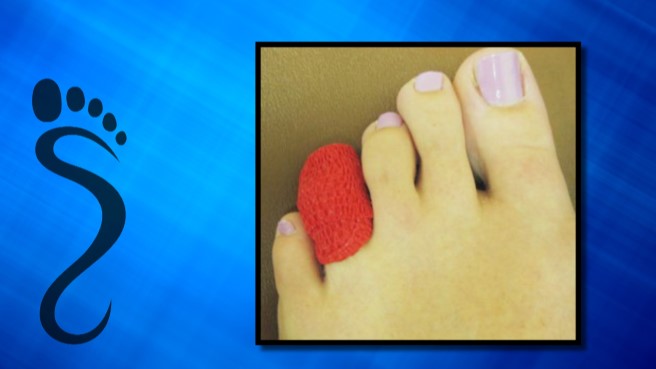 Having toenail fungus can be very painful and it may lead to many different problems. Although you may be tempted to use medication to treat the fungus, you should consult with a doctor before doing so. You can also use creams and ointments in order to treat the fungus on your toe. Essential oils can help with protecting the fungus against dust. The most popular essential oils used to fight toenail fungus are olive oil, lavender oil, tea tree oil, and oregano oil.
Having toenail fungus can be very painful and it may lead to many different problems. Although you may be tempted to use medication to treat the fungus, you should consult with a doctor before doing so. You can also use creams and ointments in order to treat the fungus on your toe. Essential oils can help with protecting the fungus against dust. The most popular essential oils used to fight toenail fungus are olive oil, lavender oil, tea tree oil, and oregano oil.
While toenail fungus is troublesome to eradicate, it is not impossible. For more information about treatment, contact one of our podiatrists of New York Foot and Ankle. Our doctors will attend to your foot and ankle needs.
Toenail Fungus Treatment
Toenail fungus is a problem which affects many people and is hard to get rid of. Fortunately, there are several methods to go about treating toenail fungus.
Antibiotics & Treatments
Lamisil – is the most commonly effective treatment for toenail fungus. It is available as an antibiotic Terbinafine tablet and cream. Terbinafine is a chemical component which kills fungal growth on the body. Applying regular doses will gradually kill the fungal growth. It is important to keep the area clean and air free.
Talcum powder – applying powder on the feet and shoes helps keep the feet free of moisture and sweat.
Sandals or open toed shoes – wearing these will allow air movement and help keep feet dry. They also expose your feet to light, which fungus cannot tolerate. Socks with moisture wicking material also help as well
Alternative Treatments
There are always surgical procedures that are available for toenail fungus. Some people would like immediate quick removal of toenail fungus. Surgeons will be able to cut through and remove the growth using laser surgery. It is important not to try and remove it yourself. Once removed, your old shoes will need to be replaced to avoid reinfection.
If you have any questions, please feel free to contact our office located in Bethpage and Franklin Square, NY. We offer the newest diagnostic and treatment technologies for all your foot care needs.
Read more about Toenail Fungus
Dealing with Athlete’s Foot
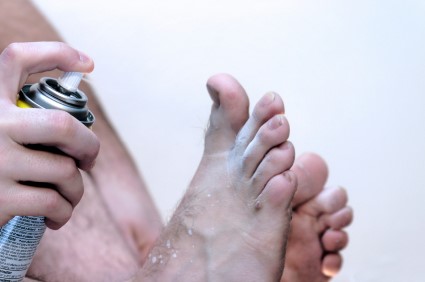 Many people who have athlete’s foot are unaware that they do. Athlete’s foot is often mistaken for dry skin on the bottom of the foot; however it can become worse if it goes untreated. If you know that you have athlete’s foot, you should not get a pedicure until it is fully treated. If you go to the salon with Athlete’s foot, you may transfer the condition to other customers as the condition can spread easily.
Many people who have athlete’s foot are unaware that they do. Athlete’s foot is often mistaken for dry skin on the bottom of the foot; however it can become worse if it goes untreated. If you know that you have athlete’s foot, you should not get a pedicure until it is fully treated. If you go to the salon with Athlete’s foot, you may transfer the condition to other customers as the condition can spread easily.
Athlete’s foot is an inconvenient condition that can be easily reduced with the proper treatment. If you have any concerns about your feet and ankles contact one of our podiatrists of New York Foot and Ankle. Our doctorswill treat your foot and ankle needs.
Athlete’s Foot: The Sole Story
Athlete's foot, also known as tinea pedis, can be an extremely contagious foot infection. It is commonly contracted in public changing areas and bathrooms, dormitory style living quarters, around locker rooms and public swimming pools, or anywhere your feet often come into contact with other people.
Solutions to Combat Athlete’s Foot
- Hydrate your feet by using lotion
- Exfoliate
- Buff off nails
- Use of anti-fungal products
- Examine your feet and visit your doctor if any suspicious blisters or cuts develop
Athlete’s foot can cause many irritating symptoms such as dry and flaking skin, itching, and redness. Some more severe symptoms can include bleeding and cracked skin, intense itching and burning and even pain when walking. In the worst cases, athlete’s foot can cause blistering as well. Speak to your podiatrist for a better understanding of the different causes of athlete’s foot, as well as helping you figure out which treatment options are best for you.
If you have any questions, please feel free to contact our office in Bethpage and Franklin Square, NY. We offer the newest diagnostic and treatment technologies for all your foot care needs.
Read more about athlete’s foot.
